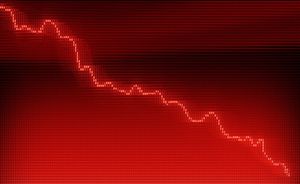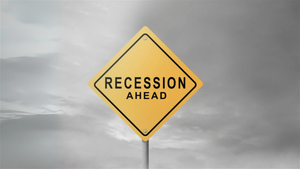
The global economy is witnessing a dramatic and concerning acceleration in wealth inequality, with a stark concentration of assets in the hands of the ultra-rich. Recent data reveals that the wealthiest 1% of the world's population now controls an astonishing 43% of all global financial assets. This monumental accumulation has been particularly pronounced since 2020, where the top 1% have acquired nearly twice as much new wealth as the remaining 99% combined, painting a grim picture of an increasingly imbalanced economic landscape.
This escalating disparity is not merely an abstract statistical anomaly; it represents a fundamental shift in economic power, with profound implications for social stability, market dynamics, and the future of capitalism itself. The rapid surge in billionaire fortunes, where the world's five richest men more than doubled their wealth in just four years, underscores a system that appears to funnel prosperity upwards at an unprecedented rate, leaving a growing majority struggling with stagnant wages and diminishing opportunities.
Unpacking the Great Divergence: How Wealth Concentrates at the Top
The current surge in wealth inequality is characterized by both a global trend and significant within-country disparities. Since 2020, the world's billionaires have collectively become $3.3 trillion richer, with their wealth growing at a rate three times faster in 2024 than in the previous year. This rapid accumulation has led to a record 2,769 billionaires globally, whose combined wealth now stands at an staggering $15 trillion. Projections even suggest the emergence of the world's first trillionaire within the next decade, a testament to the accelerating pace of wealth concentration.
This phenomenon is not confined to a few isolated cases but is a systemic trend observed across major economies. In the United States (US:^GSPC), the combined wealth of billionaires soared by 87.6% from March 2020 to March 2024, reaching $5.529 trillion. Iconic figures like Elon Musk (US:TSLA) and Jeff Bezos (US:AMZN) have seen their fortunes multiply several times over in this period, emblematic of the broader trend. Similarly, in India (IN:^NSEI), the wealthiest 1% own over 40% of the nation's total wealth, a significant increase from previous years, reflecting a similar pattern of wealth centralization within developing economies. These national examples highlight how the benefits of economic growth are increasingly unevenly distributed, exacerbating social tensions and raising fundamental questions about equity and access.
Public concern over economic inequality is also escalating. A vast majority of people across numerous countries believe that the wealth gap is too large and that governments should take action to reduce it. This widespread sentiment reflects not just a perception of unfairness but also a growing understanding of how extreme wealth concentration can impede social mobility, undermine democratic processes, and create systemic vulnerabilities. The discourse around wealth taxes, minimum wage increases, and stronger social safety nets is gaining traction, signaling a public demand for policy interventions to address this profound economic imbalance.
The Economic Chessboard: Who Wins and Who Loses
The widening global wealth gap inevitably creates distinct winners and losers within the financial markets and broader economy. On one side, the beneficiaries are often found in sectors catering to the ultra-wealthy, as well as those industries that facilitate wealth accumulation and preservation. Luxury goods companies, high-end real estate developers, and bespoke financial services providers stand to gain as the disposable income of the richest 1% continues to swell. For instance, companies like LVMH Moët Hennessy Louis Vuitton (FR:MC), Richemont (CH:CFR), and Hermès International (FR:RMS) are likely to see sustained demand for their exclusive products. Similarly, investment management firms and private banks, which manage the vast portfolios of billionaires and high-net-worth individuals, experience increased assets under management and corresponding fee revenues. Technology giants, particularly those at the forefront of innovation like NVIDIA (US:NVDA) or Microsoft (US:MSFT), whose stock valuations are often driven by investment flows rather than broad consumer spending, also tend to thrive in environments where capital is abundant at the top.
Conversely, the losers in an increasingly unequal economic landscape are often found in sectors reliant on broad-based consumer spending and middle-class prosperity. Mass-market retail, affordable housing, and essential services may face headwinds as the purchasing power of the majority stagnates or declines. Companies like Walmart (US:WMT) or Target (US:TGT) could experience pressure on sales as lower and middle-income households tighten their belts. Furthermore, businesses that depend on a robust and growing consumer base for volume sales, rather than high-margin luxury items, may find it challenging to sustain growth. Small and medium-sized enterprises (SMEs) often struggle to compete with larger corporations that have access to cheaper capital and can leverage economies of scale, further contributing to market consolidation. The erosion of the middle class also puts pressure on industries like traditional education and healthcare, as public funding and affordability become critical concerns, potentially affecting the profitability of private providers.
Ripple Effects: Industry Impact and Broader Implications
The accelerating wealth concentration is not an isolated phenomenon but rather a critical driver of broader industry trends, with significant ripple effects across the global economy. One major implication is the potential for increased market volatility. As a larger share of wealth is held by a smaller number of individuals, investment decisions by these few can have a disproportionate impact on stock markets and asset prices. This can lead to boom-and-bust cycles that are less correlated with fundamental economic health and more susceptible to concentrated capital movements. Furthermore, the immense capital available to the ultra-rich often flows into speculative assets or private equity, driving up valuations in certain sectors while potentially starving others of necessary investment.
Regulatory and policy implications are also profound. The widening gap fuels public demand for interventions such as wealth taxes, higher capital gains taxes, and increased minimum wages. Governments globally are grappling with how to address these disparities without stifling economic growth or capital flight. Discussions around universal basic income (UBI) and strengthened social safety nets are gaining traction as potential policy responses to ensure a baseline level of prosperity for a larger segment of the population. Historical precedents, such as the Gilded Age in the late 19th and early 20th centuries, offer cautionary tales of extreme inequality leading to social unrest and significant policy reforms. The current situation echoes those times, suggesting that a period of increased regulatory scrutiny and potential structural changes to the tax system and social welfare programs may be on the horizon.
Moreover, the concentration of wealth can lead to consolidation across various industries. Larger companies, with greater access to capital and political influence, can acquire smaller competitors, further reducing market competition and potentially stifling innovation. This trend is evident in sectors ranging from technology to media and finance. The ripple effects extend to the labor market, where highly concentrated industries may exert downward pressure on wages, contributing to the overall stagnation of incomes for the majority. This could exacerbate societal divisions and pose challenges to long-term economic stability and inclusive growth.
Navigating the Divide: What Comes Next
The trajectory of the global wealth gap suggests a future characterized by both significant challenges and potential opportunities, depending on how governments, corporations, and individuals respond. In the short term, markets may continue to see robust performance in sectors catering to the affluent, as well as in innovative technology firms that attract substantial capital investment from the wealthy. However, growing public discontent could translate into increased political pressure for redistributive policies, potentially impacting investment climates and corporate strategies. Companies may face increased scrutiny regarding executive compensation, labor practices, and tax contributions, prompting some to proactively engage in corporate social responsibility initiatives or adjust their compensation structures to mitigate reputational risks.
Long-term possibilities include a fundamental reshaping of economic policy. The discourse around wealth taxes, inheritance taxes, and more progressive income tax structures is likely to intensify. This could lead to strategic pivots for businesses, potentially shifting focus from purely profit-driven models to ones that also prioritize social impact and broader stakeholder value. Market opportunities may emerge in areas addressing the needs of lower and middle-income populations, particularly if governments implement policies that boost their purchasing power. This could include growth in affordable housing, public transportation, and accessible healthcare solutions. Challenges will certainly include navigating a more complex regulatory environment and managing increased social and political risks associated with inequality.
Potential scenarios range from a continued acceleration of wealth concentration, leading to increased social unrest and political instability, to a concerted global effort to implement more equitable economic policies. The latter scenario could see a re-emphasis on inclusive growth models, investments in public goods, and a recalibration of corporate responsibilities. Investors should closely watch for shifts in government policy, public sentiment, and consumer spending patterns, as these will be critical indicators of future market directions and the viability of different business models. The role of technological advancements in either exacerbating or mitigating inequality will also be a key factor to monitor.
The Defining Economic Challenge: Conclusion
The widening global wealth gap stands as arguably the most significant economic challenge of our time, deeply impacting market dynamics, societal cohesion, and political landscapes. The stark reality of the wealthiest 1% controlling nearly half of the world's financial assets, coupled with the rapid proliferation of billionaire fortunes, underscores an economic system that is increasingly concentrating prosperity at the very top. This has led to growing within-country inequality in major economies like the US and India and a rising tide of public concern about economic fairness.
Moving forward, the market will continue to be shaped by this disparity, with sectors catering to the affluent likely to thrive, while those reliant on broad consumer spending may face sustained pressure. The broader implications include increased market volatility, potential regulatory overhauls aimed at wealth redistribution, and an evolving social contract between corporations and society. Historical precedents suggest that such extreme inequality often leads to periods of significant reform, making the current moment a potential inflection point.
Investors should pay close attention to government policy shifts, particularly regarding taxation and social welfare, as well as evolving public sentiment. Companies that adapt to a potentially more equitable economic environment by focusing on sustainable growth, fair labor practices, and broader societal value creation may be better positioned for long-term success. The coming months will be crucial in determining whether global societies can find a path toward more inclusive prosperity, or if the current trajectory of wealth concentration will continue to define the global economic order.







